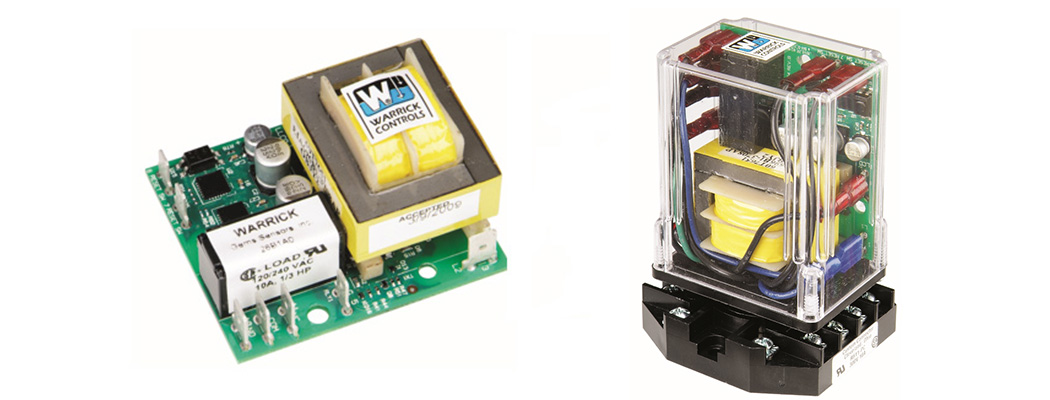All Warrick Conductivity relays have the option to be configured as Direct Mode, or Inverse Mode. The following will explain the difference between these two modes, and common applications for either. It’s important to understand common terminology prior to reading further. The following terms will be mentioned: load contacts, Normally Open (NO), Normally Closed (NC), Single Pole Double Throw (SPDT) and energize.
Load Contacts: They are the switches on the relay that will be wired to the load, or the device the relay is controlling. They will open and close like a typical light switch in your home.
- Normally Open: This is one side of the switch logic, so when the relay is in the de-energized state, this switch will be open. When the relay is in the energized state, this switch will close.
- Normally Closed. This is the other side of the switch logic, so when the relay is in the de-energized state, this switch will be closed. When the relay is in the energized state, this switch will open.
- Single Pole Double Throw: A type of switch that has a single input, but has two outputs (NO, and NC).
- Energize: The term ‘energize’ will be referring to when the load contacts change state. It’s not referring to whether there is power going to the relay, but more so which of the load contacts is closed.
Direct Mode
In Direct Mode, the relay will energize when it senses liquid on the probes. If you are using a dry contact switch, like a float switch or flow switch, then the relay will energize when that switch closes. As mentioned above, when the relay energizes the NO switch will close, and the NC switch will open.
Common Applications for Direct Mode:
- High Level Alarms
- Pump Down Applications: Sewage Lift Stations, Wells, Wastewater Treatment
Inverse Mode
In Inverse Mode, the relay will energize when it senses no liquid on the probes. If you are using a dry contact switch, like a float switch or flow switch, then the relay will energize when those switches are open. So, when the relay is energized, the NO switch will close, and the NC switch will open.
Because all Warrick Conductivity relays have SPDT load contacts, if you happen to select the wrong mode, you could switch to the NC load contact to make the logic work correctly. The LED on the relay will be backwards however, because it will turn on when the relay is energized.
Common Applications for Inverse Mode:
- Low Level Alarms
- Pump Up or Fill Applications: Boilers, Fountains, Pools
Additional information and troubleshooting can be reviewed from the Warrick Relay Troubleshooting Guide.
 SEARCH OUR RESOURCE CENTER
SEARCH OUR RESOURCE CENTER

